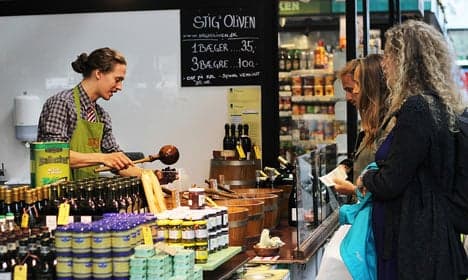Copenhagen to get another food market

A 1,400 square metre open-air food market will open in Vesterbro's Kødbyen as early as April, giving Copenhagen residents yet another option for unique food products.
Following the success of Torvehallerne, which opened in September 2011 near Nørreport Station, and Copenhagen Street Food, which opened in April on Papirøen, the Danish capital is set to get yet another large food market already next year. This time, the new trend will land smack dab in the middle of one of the city’s hippest areas: Kødbyen in Vesterbro. According to entertainment website Alt om København (AOK), the parking lot in the middle of Kødbyen’s Flæsketorvet will be converted to an open-air market every Saturday between 10am-4pm during the period of April to September. It may also expand to Sundays as well. See also: How to eat on the cheap in Copenhagen The first market will take place as early as April 4th, 2015. AOK reports that the market will cover a 1,400 square metre area and may be open for special themed events during Halloween and Christmas. Over the summer, Copenhagen Mayor Frank Jensen called for Kødbyen to undergo improvements to spur more investment in the popular nightlife destination. “Kødbyen in Vesterbro should get a lift so that it can attract even more businesses,” Jensen wrote on Twitter in August. According to AOK’s report, city officials are still working on the technical and logistic details of bringing a market to the area.
Comments
See Also
Following the success of Torvehallerne, which opened in September 2011 near Nørreport Station, and Copenhagen Street Food, which opened in April on Papirøen, the Danish capital is set to get yet another large food market already next year.
This time, the new trend will land smack dab in the middle of one of the city’s hippest areas: Kødbyen in Vesterbro.
According to entertainment website Alt om København (AOK), the parking lot in the middle of Kødbyen’s Flæsketorvet will be converted to an open-air market every Saturday between 10am-4pm during the period of April to September. It may also expand to Sundays as well.
See also: How to eat on the cheap in Copenhagen
The first market will take place as early as April 4th, 2015.
AOK reports that the market will cover a 1,400 square metre area and may be open for special themed events during Halloween and Christmas.
Over the summer, Copenhagen Mayor Frank Jensen called for Kødbyen to undergo improvements to spur more investment in the popular nightlife destination.
“Kødbyen in Vesterbro should get a lift so that it can attract even more businesses,” Jensen wrote on Twitter in August.
According to AOK’s report, city officials are still working on the technical and logistic details of bringing a market to the area.
Join the conversation in our comments section below. Share your own views and experience and if you have a question or suggestion for our journalists then email us at [email protected].
Please keep comments civil, constructive and on topic – and make sure to read our terms of use before getting involved.
Please log in here to leave a comment.